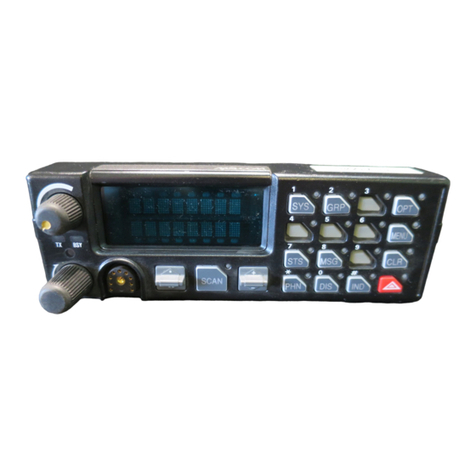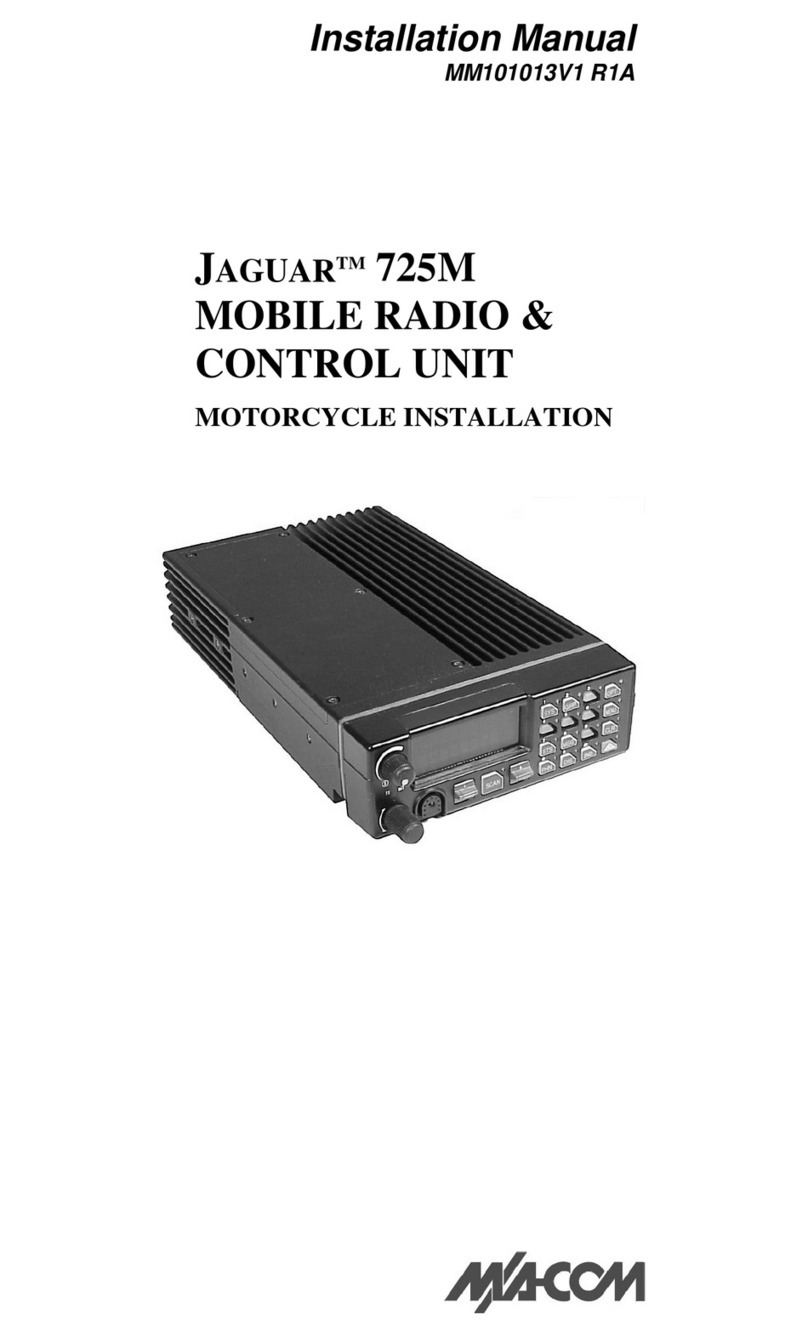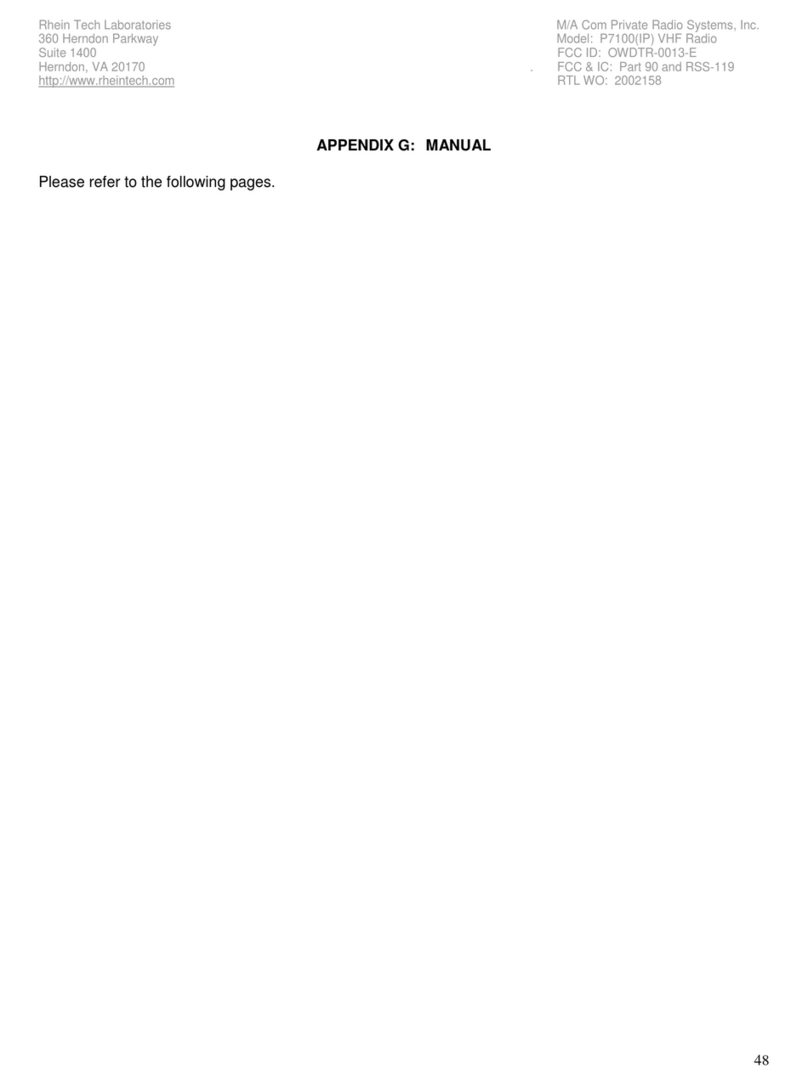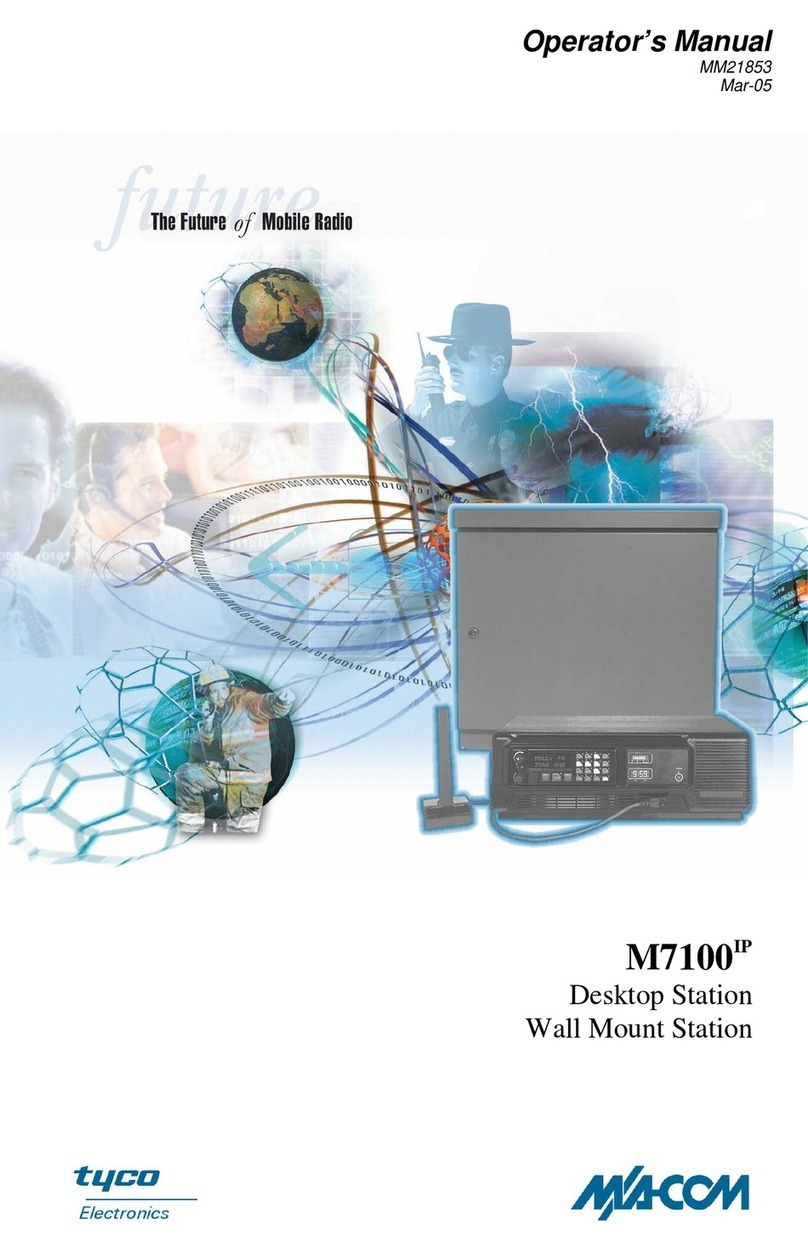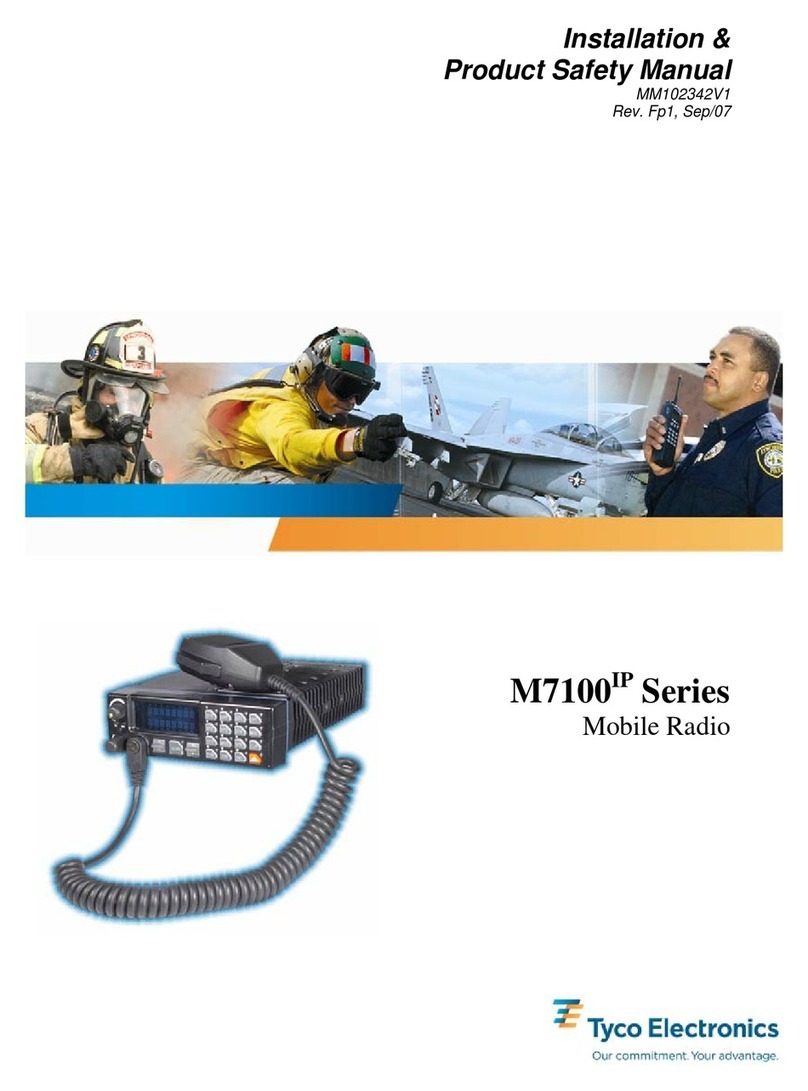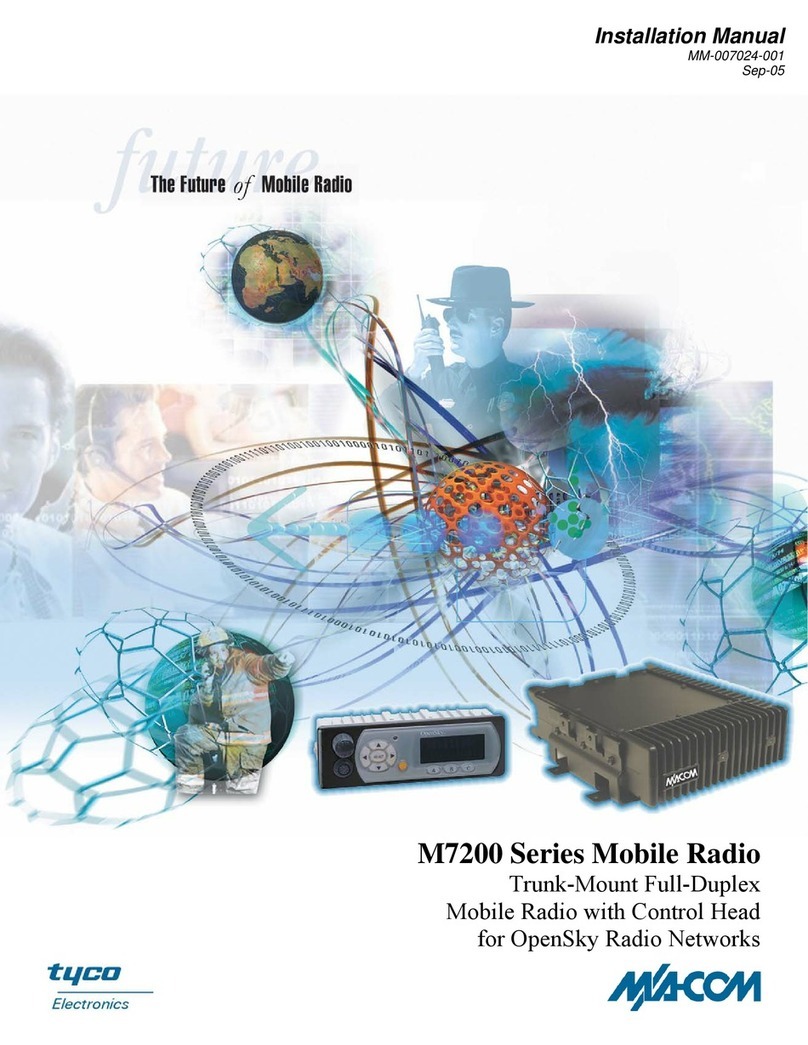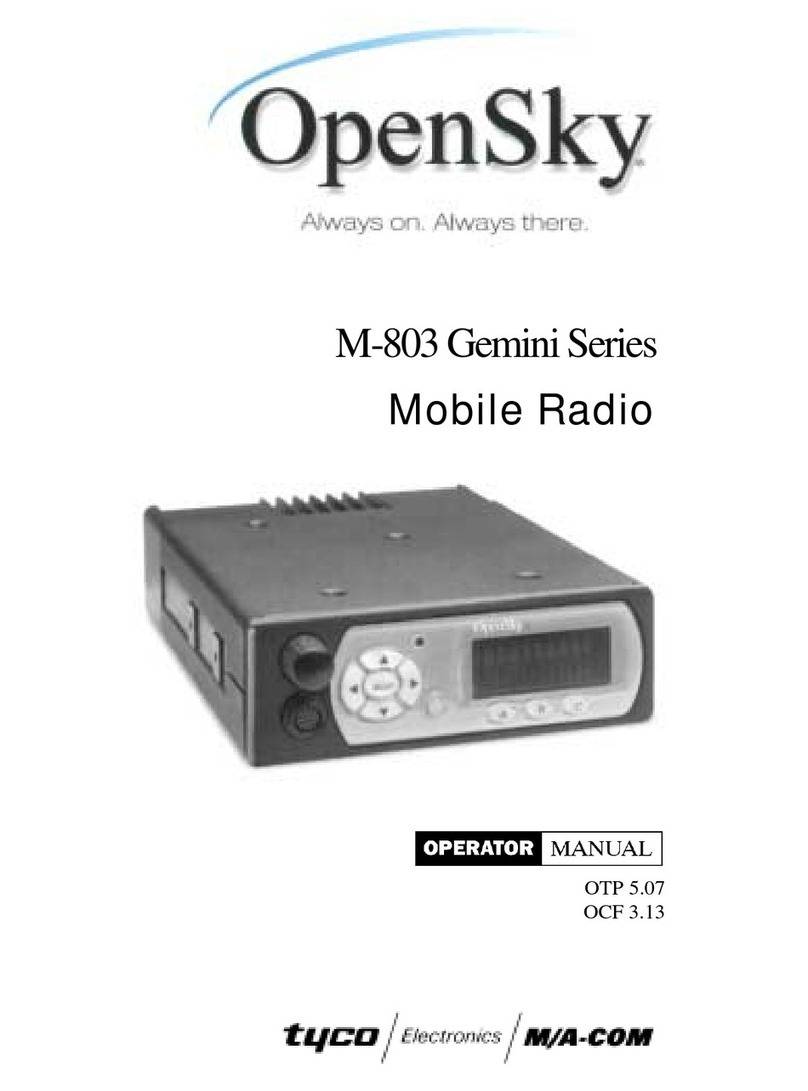
9
Table 1: Orion Mobile Radio Options And Accessories
OPTION DESCRIPTION
Z OPTIONS
D2ZN1A Accessory Kit–Front Mount with Standard Option Cable
D2ZN1B Accessory Kit–Front Mount with Extended Option Cable
D2ZN1C Accessory Kit–Front Mount Euro with Standard Option Cable
D2ZN1D Accessory Kit–Front Mount Euro with Extended Option Cable
D2ZN1F Accessory Kit–Remote Mount with Standard Option Cable, 50W TX and below
D2ZN1G Accessory Kit–Remote Mount with Standard Option Cable, 60W TX and above
D2ZN1H Accessory Kit–Remote Mount with Extended Option Cable, 50W TX and below
D2ZN1J Accessory Kit–Remote Mount with Extended Option Cable, 60W TX and above
D2ZN1K Accessory Kit–Remote Mount with Standard Option Cable, Low Band
D2ZN1L Accessory Kit–Remote Mount with Extended Option Cable, Low Band
D2ZN1M Accessory Kit–Remote Mount Euro with Standard Option Cable
D2ZN1N Accessory Kit–Remote Mount Euro with Extended Option Cable
D2ZN1P Accessory Kit–Remote Mount Motorcycle with Extended Option Cable
D2ZN1R Accessory Kit–Remote Mount Motorcycle with no Option Cable
D2ZN1S Accessory Kit–Remote Mount Euro Motorcycle with Extended Option Cable
D2ZN1T Accessory Kit–Remote Mount Euro Motorcycle with no Option Cable
D2ZN1U Dual Control, Scan Control Unit
D2ZN1V Dual Control, System Control Unit
D2ZN1W Dual Radio (50 watt TX and below)
D2ZN1X Dual Radio (60 watt TX and above)
D2ZN1Y Motorcycle Conversion, Field Upgrade, Remote Mount Radio
D2ZN1Z Motorcycle Conversion, Field Upgrade, Remote Mount Euro Radio
4 DIGIT OPTIONS
D2AN1E Antenna, Low Band WB, 29.7-38 MHz
D2AN1F Antenna, Low Band WB, 33-43 MHz
D2AN1G Antenna, Low Band WB, 37-49 MHz
D2AN1L Antenna, 800 MHz, ¼ Wave Whip
D2AN1M Antenna, 900 MHz, ¼ Wave Whip
D2AN1R Antenna, VHF/UHF, ¼ Wave Whip
D2CE1V Power Cable, 7.5M (60W TX and above)
D2CE1W Accessory Cable, Front Mount
D2CE1X Accessory Cable, Remote Mount
D2CE1Y Radio Control Cable, Remote Mount, 5.5M
D2CE1Z Accessory Cable, Euro Front Mount
D2CE5R Extended Option Accessory Cable, Front Mount
D2CE5S Radio Control Cable, Extended Option, Remote Mount, 5.5M
D2CE5T Extended Option Accessory Cable, Remote Mount
D2CE5U Extended Option Accessory Cable, Euro Front Mount

